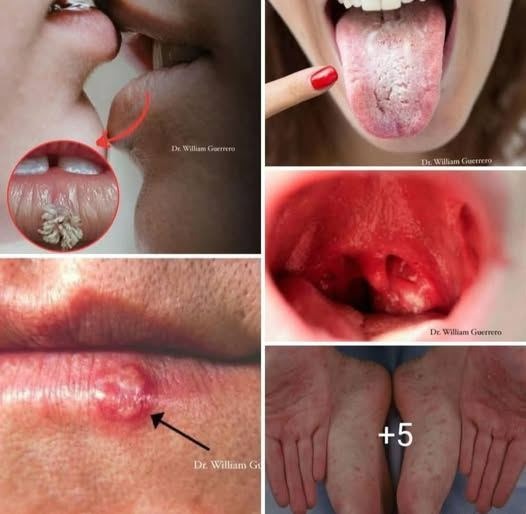
Mouth cancer — also known as oral cancer — doesn’t get as much attention as other cancers, but it’s serious, often preventable, and increasingly common.
Each year, over 54,000 people in the U.S. are diagnosed with oral or oropharyngeal cancer (according to the American Cancer Society), and thousands lose their lives because it’s found too late.
The good news?
When caught early, mouth cancer is highly treatable.
Let’s break down everything you need to know — from symptoms and causes to stages and treatment — so you can protect your health and catch warning signs before they become life-threatening.
Because real prevention isn’t about fear.
It’s about awareness, action, and regular check-ups.
What Is Mouth Cancer?
Mouth cancer refers to cancer that develops in any part of the oral cavity, including:
Lips
Gums
Tongue (front two-thirds)
Inner lining of cheeks
Roof or floor of the mouth
It usually begins as a small, painless spot or sore that doesn’t heal — which is why many people ignore it until it grows.
Most oral cancers are squamous cell carcinomas, meaning they start in the thin, flat cells lining the mouth.
⚠️ Early Warning Signs & Symptoms
Many cases are discovered during routine dental exams — but you should also monitor yourself at home.
Watch for These Red Flags:
✅
Sores that don’t heal
A patch or ulcer lasting more than 2 weeks
✅
Red or white patches
Leukoplakia (white) or erythroplakia (red) on gums, tongue, or cheeks
✅
Lumps or thickening
In the lip, mouth, or throat
✅
Persistent mouth pain
Especially when chewing or swallowing
✅
Numbness
In the tongue, lips, or face
✅
Loose teeth
Without dental cause
✅
Difficulty moving jaw or tongue
Trouble speaking or chewing
✅
Swelling that affects dentures
Once-fitting dentures now feel loose
✅
Ear pain
Referred pain from advanced tumors
Bleeding, bad breath, and weight loss may occur later.
❗ Key Fact: Some early mouth cancers cause no pain — don’t wait for discomfort.
Common Causes & Risk Factors
While anyone can develop mouth cancer, certain factors greatly increase risk.
1. Tobacco Use (Biggest Risk)
Smoking cigarettes, cigars, or pipes
Chewing tobacco, snuff, or betel quid
Accounts for nearly 80% of oral cancer cases
Even vaping may irritate tissues — long-term risks still being studied
2. Heavy Alcohol Use
Drinking alcohol regularly increases risk
Combined with tobacco? The danger multiplies by up to 30x
3. HPV (Human Papillomavirus)
HPV type 16 is linked to oropharyngeal cancer (back of throat, base of tongue)
Now responsible for over 70% of oropharyngeal cancers
Often affects younger, non-smoking adults
✅ The HPV vaccine helps prevent infection — recommended for teens and young adults
4. Sun Exposure
Increases risk of lip cancer, especially on the lower lip
Farmers, fishermen, outdoor workers are more vulnerable
️ Use SPF lip balm and wear hats
5. Poor Diet
Low intake of fruits and vegetables linked to higher risk
Antioxidants help protect cells from damage
6. Weakened Immune System
Conditions like HIV/AIDS or immunosuppressive drugs increase susceptibility
How Is Mouth Cancer Diagnosed?
If your dentist or doctor suspects cancer, they’ll likely:
Perform a visual and physical exam
Order a biopsy (removing a small tissue sample)
Use imaging tests (like CT, MRI, or PET scans) to see if it has spread
Staging determines how far the cancer has progressed — crucial for treatment planning.
Stages of Mouth Cancer
Cancer stage depends on tumor size, lymph node involvement, and metastasis.
✅
Stage I
Small tumor (≤2 cm), no spread to nodes or distant sites
✅
Stage II
Tumor 2–4 cm, still localized
✅
Stage III
Tumor >4 cm OR any size with single nearby lymph node involvement
✅
Stage IV
Spread to multiple lymph nodes, deeper tissues, or distant organs (e.g., lungs)
Early detection (Stages I–II) = much better prognosis.
Treatment Options
Treatment depends on stage, location, and overall health.
1. Surgery
Remove the tumor and some surrounding healthy tissue
May include neck dissection if lymph nodes are involved
Can affect speech, swallowing, or appearance — reconstruction often needed
2. Radiation Therapy
High-energy beams kill cancer cells
Used alone for early cancers or after surgery to eliminate remaining cells
Side effects: Dry mouth, sore throat, taste changes
3. Chemotherapy
Drugs that target fast-growing cells
Often combined with radiation (chemoradiation) for advanced cases
Side effects: Fatigue, nausea, hair loss
4. Targeted Therapy & Immunotherapy
Cetuximab (Erbitux®): Targets proteins on cancer cells
Pembrolizumab (Keytruda®): Helps immune system attack cancer
Used for recurrent or metastatic disease
✅ Prevention Tips That Work
You can’t eliminate all risk — but you can reduce it significantly.
✅ Quit tobacco
One of the most powerful actions you can take
✅ Limit alcohol
No more than 1 drink/day (women), 2 (men)
✅ Get vaccinated against HPV
For boys and girls ages 9–26
✅ Eat more fruits & veggies
Rich in antioxidants and vitamins
✅ Wear SPF lip balm
Protects against UV damage
✅ Visit your dentist regularly
Oral cancer screenings are quick and painless
Many dentists perform an oral cancer check during every cleaning.
❌ Debunking the Myths
❌ “Only smokers get mouth cancer”
False — HPV-related cases are rising in non-smokers
❌ “It only affects older people”
No — younger adults are seeing more HPV-linked cases
❌ “If I don’t smoke, I’m safe”
Not true — sun exposure, HPV, and genetics play roles
❌ “Oral cancer is rare”
It’s not — and survival rates drop sharply when late-stage
Final Thoughts
You don’t need to live in fear of mouth cancer.
But you should pay attention to what’s happening in your mouth.
So next time you’re brushing your teeth…
look.
Check your tongue.
Peer under it.
Feel along your gums.
And if something looks wrong — even if it doesn’t hurt — see a professional.